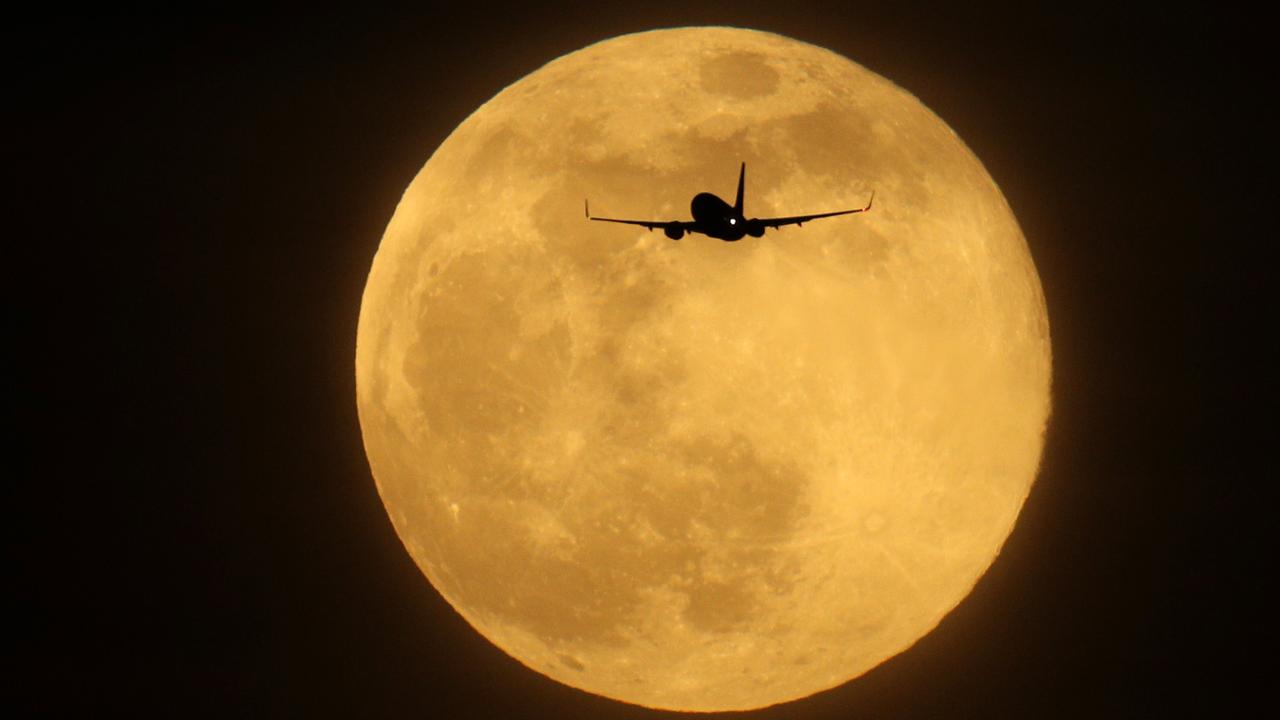World stargazers enjoy sight of biggest and brightest supermoon of the year
World stargazers have enjoyed the sight of the biggest and brightest supermoon of the year. But if you missed it, don’t worry, there’s another one coming very soon

READING LEVEL: GREEN
Stargazers and amateur* photographers in Australia and around the world enjoyed the sight of the biggest and brightest supermoon event of the year last night.
A supermoon occurs when a full moon, on its oval-shaped orbit*, is at its closest point to Earth.

During such an event the moon looks to be about 14 per cent bigger and about 30 per cent brighter compared with when it’s at the furthest* point in its elliptical* orbit around Earth.
It reached its biggest size at 2.53am but the best time to see it was just after sunset when the moon was rising against the horizon, explained Dr Brad Tucker from the ANU Research School of Astronomy* and Astrophysics*.
“That’s when you get to see it coming on the horizon and the visual effects of it appearing to be bigger look the best”, he said.


In the northern hemisphere*, it was referred to as the “super snow moon”, a name invented by Native Americans and Europeans because February is the month associated with heavy snowfall.
While there will be another supermoon in March, last night’s was technically the closest version and therefore the biggest of the year.
GLOSSARY
- amateur: not professional
- orbit: the curved course of a space object
- furthest: at the greatest distance
- elliptical: oval or egg-shaped
- astronomy: study of space and the universe
- astrophysics: study of stars and space bodies and the physics surround them
- northern hemisphere: half of the Earth above the equator
EXTRA READING
QUICK QUIZ
- Why is it called a Super Snow Moon?
- How much bigger is it than a normal Moon?
- When is the best time to see a supermoon?
- Who is Dr Brad Tucker?
- When will the next supermoon be visible in Australia?
LISTEN TO THIS STORY
CLASSROOM ACTIVITY
1. Moon poster
Create a poster to explain to younger children all the information in this story about the moon.
Include labelled drawings and at least three or more factual pieces of information and make it appealing for your target audience. You may need to research more information about the moon using other sources.
Time: Allow 30min for this activity.
Curriculum links: English, Science
2. Extension
Write a paragraph explaining who your target audience is for your poster. How old are they? Why have you chosen these facts, colours and design? Include one suggestion for how your poster could be changed to be used by even younger children, and one suggestion for how it could be changed to be used by older children.
Time: Allow 15min for this activity.
Curriculum links: English, Science
VCOP ACTIVITY
The glossary of terms helps you to understand and learn the ambitious vocabulary being used in the article. Can you use the words outlined in the glossary to create new sentences? Challenge yourself to include other VCOP (vocabulary, connectives, openers and punctuation) elements in your sentence/s. Have another look through the article, can you find any other Wow Words not outlined in the glossary?
HAVE YOUR SAY: Have you ever seen a supermoon? What did you think?
No one-word answers. Use full sentences to explain your thinking.

